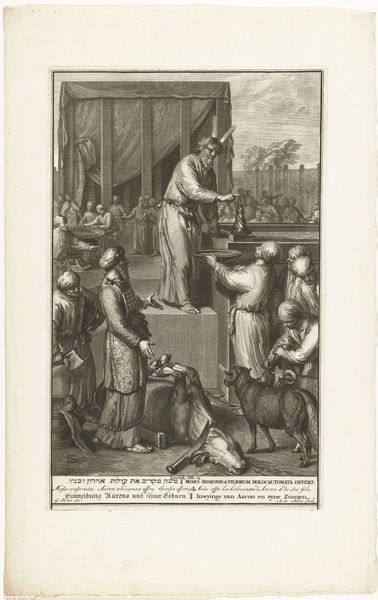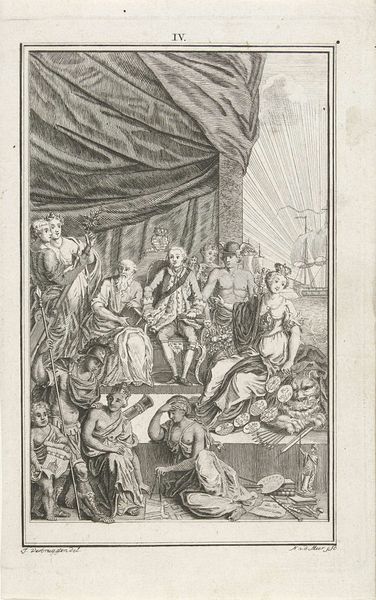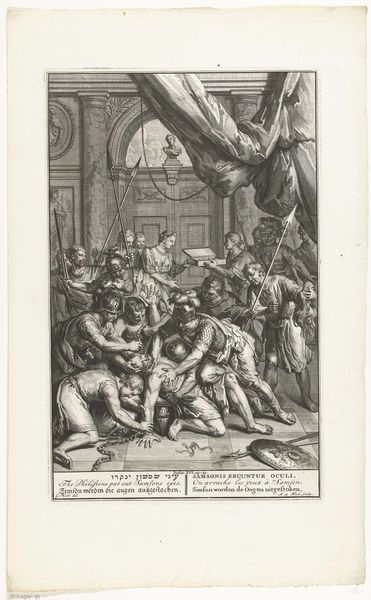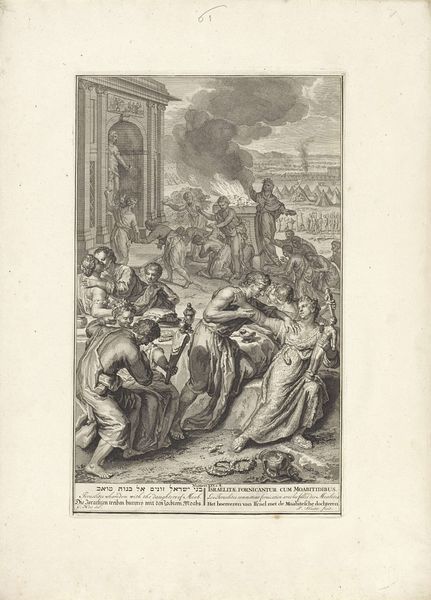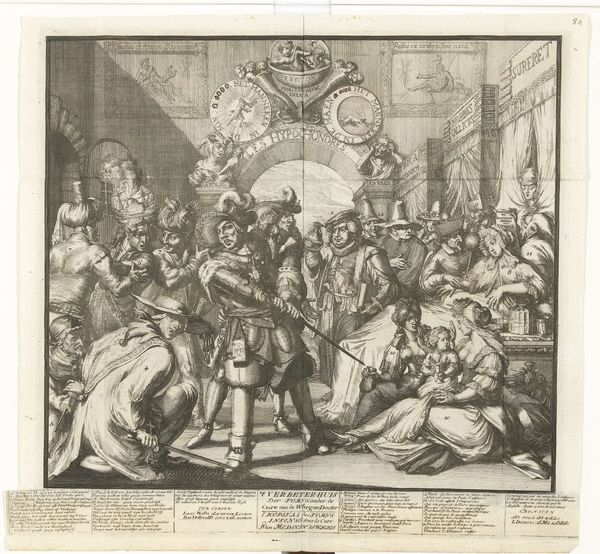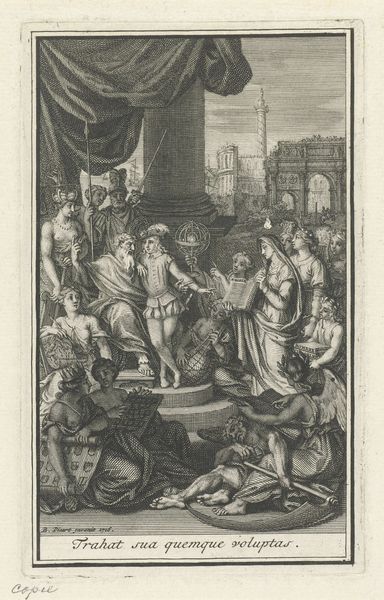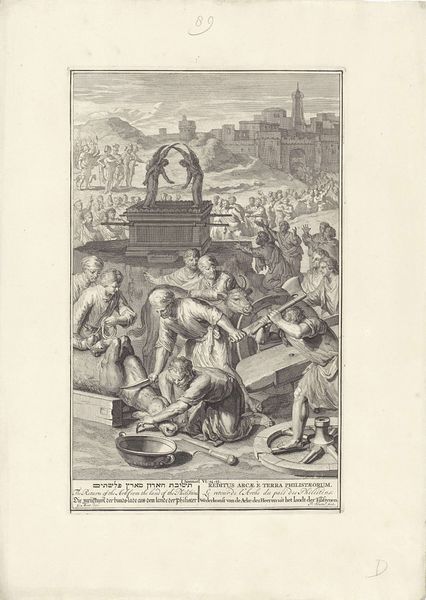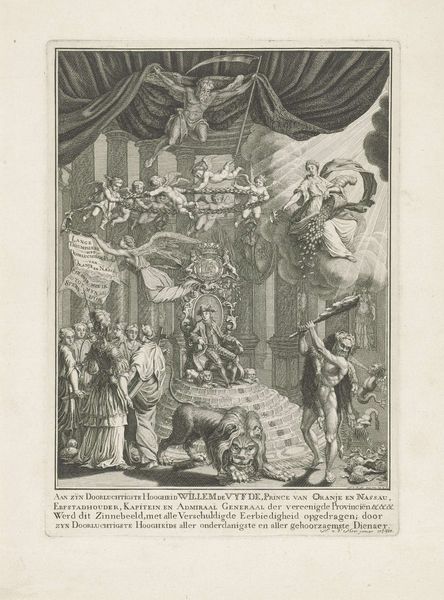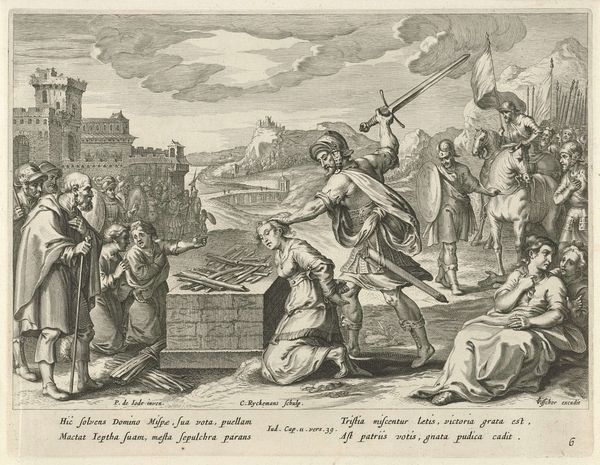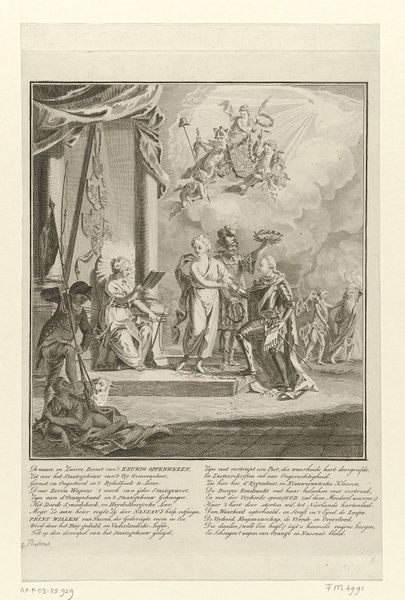
print, engraving
#
narrative-art
#
baroque
# print
#
old engraving style
#
figuration
#
history-painting
#
engraving
Dimensions: height 360 mm, width 221 mm
Copyright: Rijks Museum: Open Domain
Curator: Joseph Mulder created this engraving, “Jozua en Eleazar delen het beloofde land uit”, sometime between 1720 and 1728. The scene depicts Joshua and Eleazar dividing the Promised Land. It’s quite intricate, isn't it? Editor: It feels… staged. Look at the arrangement of figures; it resembles a theater production, doesn’t it? The artificiality is hard to ignore, but perhaps fitting considering the topic of division and allocation of power. Curator: Yes, consider the symbolic implications. We see the figures of Joshua and Eleazar—pivotal figures of authority— overseeing the division. In this context, the lottery itself acts as a charged symbol, revealing divine intent in terrestrial matters. The blind casting is symbolic. Editor: Precisely. A lottery conceals its structures of power under the veil of chance and highlights the concept of manifest destiny at play, where some receive more privilege based on predetermined circumstances, reflecting the deeply ingrained structural inequities perpetuated in contemporary societies. Curator: Mulder seems preoccupied with representing not just the physical division of land but also the act of legitimizing it through visual means. Take a look at the map held up at the back of the room. Its mere presence cements a certain degree of officialdom, right? The symbolic implications are profound. Editor: Absolutely, the inclusion of that map, within the print, becomes an instrument—it asserts a dominant perspective that requires constant interrogation and critical analysis from modern audiences. It is, therefore, paramount for us to understand this depiction in relation to issues of colonialism, land rights, and the complex legacy of mapped territories that extends well beyond just biblical allegory. Curator: Viewing this through an iconographic lens, it is interesting how symbols of divine will, here manifesting in the lottery, get appropriated and translated over time in varied historical and cultural narratives to bolster ideas of destiny or cultural superiority. Editor: And while it’s important to be critical of how these narratives get presented, one might see some semblance to struggles for equality. This image opens up discussion about agency and the forces at work shaping historical movements for liberation and justice. Curator: Seeing it now through both lenses, it reminds us how history can inform not just how we see the past, but also how we understand present social conditions and our continued march towards progress. Editor: Indeed, grappling with visual depictions of past ideologies reminds us of our shared responsibility for creating a more just future, guided by deeper understanding.
Comments
No comments
Be the first to comment and join the conversation on the ultimate creative platform.



